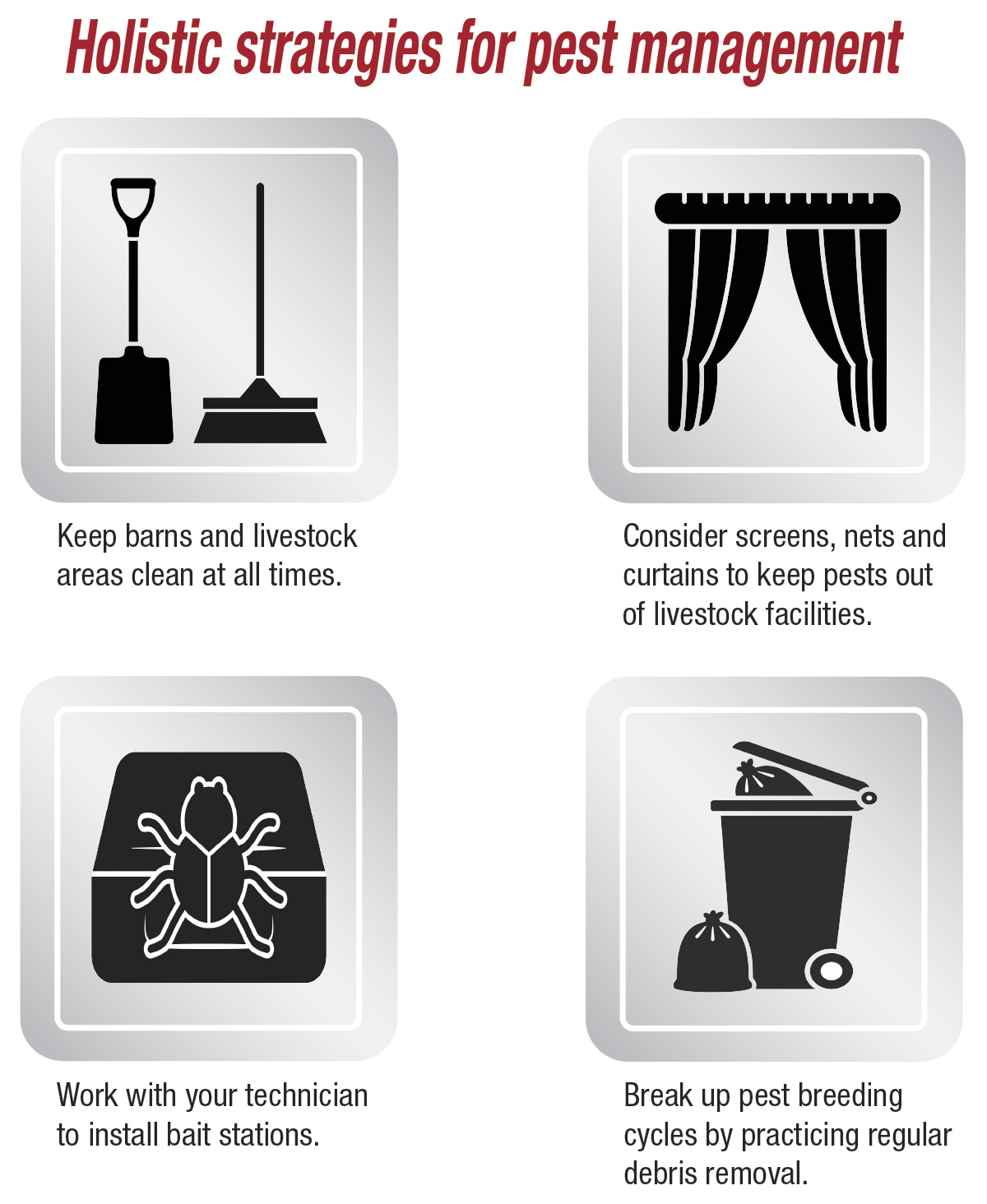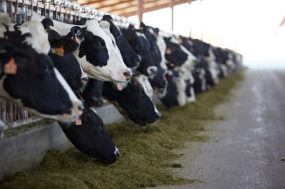To read this article in French, click here.
Integrated pest management (IPM) plays a critical role in dairy farming, addressing two key objectives: safeguarding the food product from pest contamination and ensuring the well-being of cattle by minimizing their exposure to insects.
While it's common to see cattle swatting flies, especially during hot summer months, there are limitations to their natural defences. Happy cows, free from the stress caused by biting insects, yield premium-quality milk. Thus, minimizing insect presence becomes imperative to maintain stress-free cows.
Implementing effective IPM strategies is extremely important for dairy operations, not only for pest control but also for ensuring overall welfare and productivity.
Various pests, ranging from insects to birds, rodents and other animals, can pose significant challenges for dairy farms. Among these, flies stand out as particularly problematic. Flourishing on organic matter, flies multiply rapidly, causing stress among cattle and potentially resulting in a decline in milk production. Moreover, these pests act as carriers for diseases such as mastitis, further undermining cow health and productivity.
Stable flies and face flies are common pests found around livestock, posing significant challenges to their well-being. Stable flies, akin to houseflies, possess biting mouthparts and feed on livestock blood, causing irritation and stress. In contrast, face flies, smaller and non-biting, are particularly bothersome to cattle, congregating around sensitive areas like the eyes, nose and mouth to access moisture sources.
An essential component of IPM strategies, particularly when addressing issues related to flies, is prioritizing sanitation practices. Establishing and upholding clean and hygienic conditions within barns and other livestock areas serves as the cornerstone of effective pest control efforts. Dairy farmers can notably reduce the attraction and sustenance of pests such as flies by ensuring consistent cleanliness. This includes the regular removal of waste and organic debris, which disrupts the breeding cycle of pests, consequently restraining their population growth. Emphasizing sanitation not only mitigates current pest infestations but also helps prevent future outbreaks, fostering a healthier and more productive environment for both livestock and farmers alike.
In addition to using IPM for insects, farmers need to establish prevention plans to handle other pests infiltrating their facilities. Installing screens, nets or curtains can block pests from accessing livestock areas, which helps maintain animal health and productivity. Furthermore, implementing rodent control devices like secured bait stations along exterior walls is crucial. Your pest control technician will anchor, lock and label each. Even more advantageous for farmers is that technicians strategically position the bait, ensuring no bait is left on the premises. They will also maintain the stations diligently, replacing the bait as necessary.
By integrating these diverse strategies, dairy farmers can achieve effective pest management while reducing reliance on chemical repellents. This holistic approach not only safeguards the health and well-being of livestock but also minimizes environmental impacts and promotes the safety of farm personnel. Moreover, by adopting sustainable pest control practices, dairy operations can enhance overall productivity and profitability in the long term.











